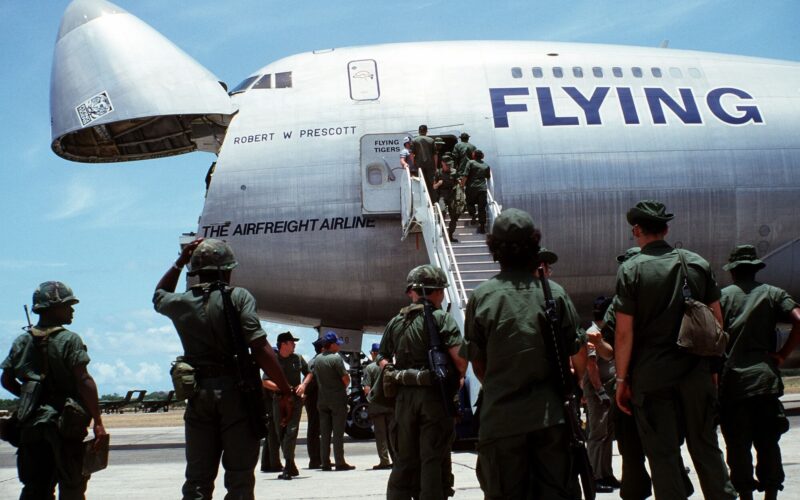For decades, the United States military has relied on private contractors to transport service members and their families during deployment around the world. Freedom birds, Patriot Express, these civilian flights have been essential to alleviate the pressure on the fleet of the military.
US airlines’ participation in the war effort
The reliance of the US military on civilian airlines dates back to the creation of the Air Transport Command during the Second World War. Back then, over half of the 360 airliners operating in the United States, mainly Douglas DC-3s, were requisitioned. The nascent concept of tactical airlifting drew on the experience of the major American airlines along with their crew.
In the aftermath of the Second World War, the United States Army Air Forces (soon to become the US Air Force) identified the need to keep its transport fleet available for critical missions rather than troop transportation. Thus, starting from the Korean War, civilian airlines were contracted to support the military .
The concept rose to prominence during the Vietnam War. Established at the height of the United States’ involvement in the conflict, the Military Airlift Command (MAC) was in charge of the transport of troops and freight to the warzone. To support its fleet of C-130s, C-141s and C-5s, MAC’s role was also to coordinate the leasing of commercial aircraft.
Among them was the Flying Tiger Line, incidentally the first scheduled cargo airline in the United States. It was founded by former pilots who volunteered to defend the Republic of China against Japanese forces during the Second World War – the Flying Tigers. Hired during the Korean and Vietnam conflicts, the airline was contracted to fly thousands of soldiers in and out of the war theaters.
As they were bringing back service members to their homeland, these flights were soon dubbed the ‘Freedom Birds’.
Patriot Express and the post-Cold War era
After the Cold War, MAC was absorbed by the new-found Air Mobility Command. Reliance on civilian contractors, however, did not change. The program which later took the name of Patriot Express (PE) continued to transport personnel to Europe, the Middle East, and the Pacific.
Up to 340,000 passengers a year relied on flights chartered by the US Department of Defense during their permanent change of station (PCS). In addition, unused seats were made available to other service members and their families through the Space-Available (or Space-A) travel scheme. During these flights, passengers could enjoy all the amenities usually provided during commercial flights.
At the turn of the millennium, the Defense Department raised the alarm on the financial losses caused by the program. The main cause was cited as the high number of PE passengers not showing up, preferring regular commercial services for which the Department also footed the bill. DoD auditors found that more than half of the seats were left empty on certain routes. Overall, a rough average of $35.8 million a year was lost between 1998 and 2002.
As a consequence, the scale of the PE program was vastly reduced, leading to the gradual closure of the gateways at Los Angeles International Airport, Seattle-Tacoma International Airport and Hartsfield-Jackson Atlanta International Airport between 2004 and 2006.
But the planned discontinuation of the program was interrupted and instead gave way to a restructuring plan to streamline the service. Less than three years later, the Patriot Express returned.
Today, whether it be for peacetime deployment or flying in and out of a warzone, leasing civilian airliners remain an integral part of US military transportation. For example, the Defense Department activated the Civil Reserve Air Fleet (CRAF) and commandeered 18 aircraft belonging to various US air carriers to participate in the evacuation of US citizens and Afghan evacuees from Afghanistan to the United States in August 2021.

